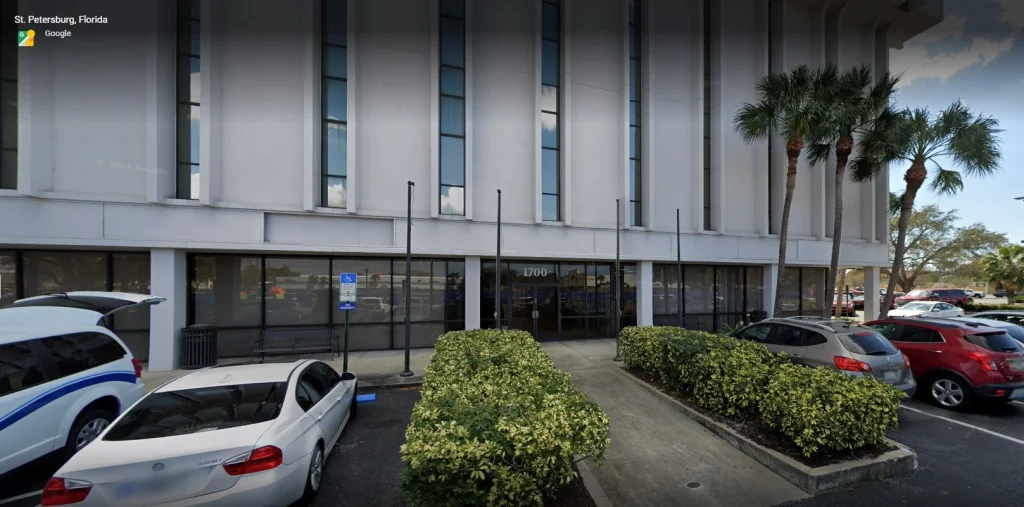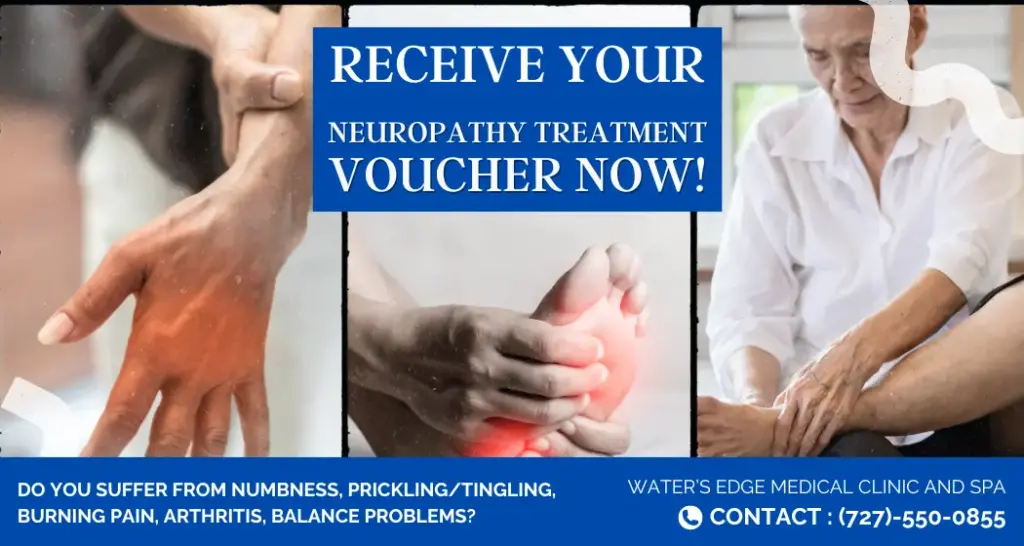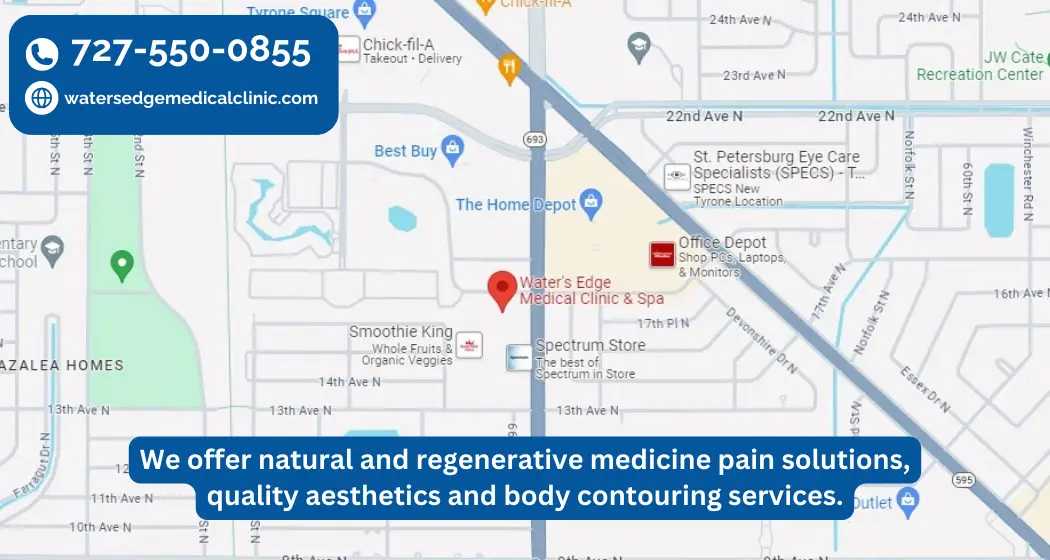Neuropathy, a disorder characterized by nerve damage, can manifest through various symptoms including pain, numbness, and weakness. As the medical community advances, a variety of therapies are available to those seeking neuropathy treatment. This article delves into the different options for neuropathy therapy and neuropathy care that can be found nearby, from regenerative medicine to neuromodulation techniques and integrative care approaches. These treatments help patients make better choices about their health and improve their quality of life.
Key Takeaways
- Regenerative therapies like stem cell and PRP treatments offer innovative approaches to nerve repair and regeneration, harnessing the body’s own healing capabilities.
- Neuromodulation techniques such as spinal cord and peripheral nerve stimulation present new avenues for long-term pain management in neuropathy patients.
- Integrative care, combining traditional treatments with complementary therapies like acupuncture and massage, addresses multiple aspects of neuropathy for holistic care.
- Navigating the healthcare system effectively is crucial, with resources like Zocdoc helping patients find in-network neuropathy specialists and schedule appointments.
- Working together with a group of healthcare experts, including chiropractors and physical therapists, is key to a comprehensive management strategy for neuropathy.
Understanding Neuropathy and Its Treatments
Peripheral neuropathy affects the peripheral nerves, the extensive communication network that transmits information between the central nervous system and every other part of the body, become damaged or dysfunctional. This can lead to various symptoms, such as numbness and tingling, as well as severe pain and muscle weakness, greatly impacting daily functioning and overall health.
Defining Neuropathy and Its Impact on Patients
The impact of neuropathy on patients is profound and multifaceted:
- Symptoms: Numbness, tingling, sharp pains, muscle weakness
- Daily Activities: Challenges with walking, driving, and sleeping
- Emotional Well-being: Increased risk of anxiety, depression, and sleep disorders
Neuropathy not only impairs physical functions but also has the potential to disrupt emotional stability and social interactions. Comprehensive care is therefore essential.
Effective management of neuropathy requires a thorough understanding of its diverse presentations and a tailored approach to treatment. With a variety of therapies available, from medications to holistic interventions, patients have multiple avenues to explore. They can search for relief through these options.
Traditional and Emerging Therapies
The therapeutic landscape for neuropathy is diverse, encompassing both time-honored treatments and innovative approaches. Traditional therapies typically include medications such as anti-seizure drugs, antidepressants, and pain relievers, which aim to manage symptoms and improve quality of life. However, the emergence of new pharmacological agents and devices is broadening the spectrum of available treatments.
Emerging therapies are characterized by their novel mechanisms of action and potential to address the underlying causes of neuropathy.
These include FDA-approved treatments like Spinal Cord Stimulation (SCS) and capsaicin 8% topical system. They also involve drugs with new mechanisms of action and electrical stimulation devices.. The integration of these options with conventional methods provides a more thorough method of caring for patients. Incorporating these options alongside conventional methods provides a more holistic approach to patient care.
Staying informed about the latest advancements in neuropathy treatments is essential. It helps both patients and healthcare providers make well-informed decisions about care. Below is a list of commonly used first-line treatments supported by current US guidelines:
- Anti-seizure medications
- Antidepressants
- Over-the-counter pain relievers
- Prescription pain medications
- Topical treatments
As we continue to explore and validate new therapies, the hope for improved outcomes for neuropathy patients grows.
The Role of Accurate Diagnosis in Treatment Selection
The journey to managing neuropathy effectively begins with an accurate diagnosis. Differentiating neuropathic pain from other types, like nociceptive pain, is vital for customizing the appropriate treatment regimen.
When considering treatment options, it’s essential to be aware of potential drug-drug interactions (DDIs) and adverse drug reactions (ADRs), especially in cases of polypharmacy.
Patients, caregivers, and healthcare providers should set realistic expectations about treatment outcomes. Pain reduction, rather than complete elimination, and improved health-related quality of life (HR-QoL) are the primary goals. Often, a series of treatments must be evaluated to find the most effective one.
To further refine treatment selection, the development of biomarkers to identify responders versus non-responders is underway. Comparative studies are necessary to evaluate the long-term effectiveness of different interventions, including their effects on pain, HR-QoL, patient functionality, mood, and sleep.
Regenerative Therapies: Harnessing the Body’s Healing Power
Stem cell therapy represents a cutting-edge advancement in the realm of regenerative medicine, specifically targeting the repair and regeneration of damaged nerve tissues in neuropathy patients. It possess a distinctive capability to transform into diverse cell types, including nerve cells, thereby potentially enhancing nerve function and alleviating neuropathy symptoms.
Stem Cell Therapy and Nerve Regeneration
There are currently two process for stem cell therapy. One being harvesting stem cells from your own body, which are then processed and reintroduced into the affected areas and the second is getting stem cells from an accredited tissue bank and using donor mesenchymal stem cells that are derived from the Whartons jelly found in the umbilical cord.
Harvesting stem cells from a persons own body can be more costly than getting stem cells from a donor. The process is also painful if taken from the patients own bone marrow. Stem cells received from donor tissue is younger, more viable and more potent than taken from a patients own body. However, the integration of stem cells into the damaged nerve sites can facilitate the restoration of nerve signals and alleviate neuropathic pain regardless of which type of stem cell therapy a person may chose to use.
While stem cell therapy is still under extensive research, early clinical trials and patient reports suggest a potential for significant improvement in neuropathic conditions without the need for extensive recovery time. Moreover, this therapy can be synergistically combined with other treatments to enhance overall outcomes.
It’s essential to acknowledge that stem cell therapy might not be appropriate for every patient, and a comprehensive assessment by a qualified specialist is crucial to determine the optimal course of action. The physicians and staff at Waters Edge medical Clinic in St. Petersburg, Florida specialize in regenerative medicine and the care and treatment of neuropathy, thus if you have any questions or would like a consultation to see if stem cell therapy is right for you, feel free to reach out to us at the office number listed. 727-550-0855.
The Potential of Platelet-Rich Plasma (PRP) Therapy
Platelet-Rich Plasma (PRP) therapy is gaining traction as a non-invasive and potentially effective treatment for neuropathy. This regenerative approach leverages the growth factors in a patient’s own blood to foster nerve repair and regeneration. PRP therapy could be particularly beneficial for those suffering from conditions like diabetic neuropathy, where traditional treatments may fall short.
PRP injections can improve nerve health and lead to the elimination of neuropathy symptoms, offering hope for a breakthrough in patient care.
While PRP therapy is still under investigation for neuropathy, early studies suggest that it can lead to significant improvements in nerve function and pain reduction. The table below outlines some of the key aspects of PRP therapy:
| Aspect | Description |
| Basis | Utilizes patient’s own blood |
| Goal | Stimulate nerve repair and regeneration |
| Method | Injection of concentrated platelets |
| Potential | Non-invasive, effective for certain neuropathies |
Evaluating the Effectiveness of Regenerative Medicine
As the field of regenerative medicine advances, evaluating its effectiveness in treating neuropathy becomes crucial. The success of therapies like stem cell and PRP hinges on their ability to promote nerve repair and regeneration. However, the assessment of these therapies is complex and multifaceted.
- Clinical trials and meta-analyses provide structured data on the efficacy of treatments.
- Long-term outcomes such as pain relief, quality of life, and patient functioning are essential metrics.
- Comparative studies are necessary to identify the most effective interventions.
The challenge lies in identifying biomarkers that can predict which patients will benefit from specific regenerative therapies. This is a key step in personalizing neuropathy treatment and ensuring the best possible outcomes for patients.
Future research should focus on the pathological changes in neuropathy and the discovery of biomarkers to tailor treatments to individual needs. The table below summarizes findings from clinical studies on the effectiveness of electrical stimulation devices in neuropathy treatment:
| Study Type | Intervention | Outcome | Effectiveness |
| Phase 3/4 Clinical Trials | Electrical Stimulation Devices | Pain Relief | Varies by study |
| Meta-Analyses | Electrical Stimulation Devices | Pain Relief | Varies by study |
This table exemplifies the structured approach to evaluating therapeutic interventions, which is essential for advancing the field and improving patient care.
Neuromodulation Techniques: Innovations in Pain Management
Spinal Cord Stimulation (SCS) is a form of neuromodulation therapy that has been a cornerstone in the management of intractable pain for decades. It means putting a device in your body that sends gentle electric signals to your spine. These signals change the pain messages before they get to your brain, so you feel better.
Understanding Spinal Cord Stimulation (SCS)
Patients considering SCS undergo a trial stimulation period to assess the effectiveness and tolerability of the therapy. If the trial is successful, indicating significant pain reduction and functional improvement, a full SCS system is implanted. The procedure, while minimally invasive, can have associated adverse events, typically related to the implantation process.
SCS therapy has expanded its applications to include painful diabetic peripheral neuropathy (DPN), offering hope for patients who have exhausted other treatment options.
Deciding to get SCS is a big choice. We think about the good things and the bad things. During a test, we see how you respond. It’s a team effort between you and your doctor to make sure everything goes well. Spinal stimulators should be a last resort, and only used after careful consideration. Many patients will experience emotional changes including mood swings, irritability and some have even reported affected sleep. These problems could be occurring from constant stimulation from the addition of the spinal stimulator and researchers have speculated that these emotional changes have occurred due to changes in the bodies polarity from the addition of the spinal stimulator.
Peripheral Nerve Stimulation (PNS) and Its Benefits
Peripheral Nerve Stimulation (PNS) is a neuromodulation technique that involves the temporary implantation of electrodes near the peripheral nerves to manage neuropathic pain. This approach can significantly reduce pain and alter pain perception, enhancing the quality of life for patients.
PNS is particularly beneficial for patients who have not found relief from other treatments and those who prefer a non-permanent solution. The electrodes are placed for a period of 60 days, and for many, the pain relief extends beyond this timeframe.
- Non-invasive and well-tolerated
- No drug-drug interactions or adverse drug reactions
- Potential for long-term pain relief
- Can be a trial before committing to permanent solutions
While PNS does not completely eradicate pain, it offers a substantial reduction in pain levels and can be a pivotal part of a comprehensive pain management plan.
Selecting Candidates for Neuromodulation Therapies
Identifying the right candidates for neuromodulation therapies, such as Spinal Cord Stimulation (SCS) and Peripheral Nerve Stimulation (PNS), is a critical step in the treatment of neuropathic pain. These therapies are particularly beneficial for patients who have not found relief through traditional treatments.
Neuromodulation techniques target the underlying mechanisms of nerve dysfunction, offering a promising approach for long-term pain management.
Choosing who can get SCS is a big process. We look at all the things about the patient, including pain location and intensity, stage of neuropathy progression, and response to previous therapies. Additionally, factors such as comorbid medical conditions and current medications are taken into account to ensure the suitability and safety of the intervention.
- Patient Selection Criteria:
- Refractory to conventional pharmacological therapy
- Chronic neuropathic pain for “>=1 year”
- No contraindications to neuromodulation devices
The application of a multidisciplinary team conference can facilitate patient selection and optimization, ensuring that each case is reviewed with the expertise of various healthcare professionals.
Integrative Approaches to Neuropathy Care
Integrative approaches to neuropathy treatment blend conventional medical therapies with complementary practices, creating a multimodal strategy tailored to individual patient needs. This synergy aims to not only alleviate symptoms but also to enhance the patient’s overall quality of life.
Combining Conventional and Complementary Therapies
- Conventional treatments: Medications, physical therapy, surgical interventions
- Complementary therapies: Acupuncture, massage therapy, mindfulness-based stress reduction
By combining different types of treatments, patients get better care that looks at both the physical and emotional sides, as well as other aspects like how it affects their life. Collaborative care involving a team of healthcare professionals, including pain management specialists and physical therapists, is crucial for managing complex neuropathy cases effectively.
The goal is to embark on a journey toward holistic healing and enhanced well-being, ensuring that each patient’s treatment plan is as unique as their experience with neuropathy.
The Role of Acupuncture, Massage, and Mindfulness
Integrative approaches to neuropathy care often include therapies like acupuncture, massage, and mindfulness. These complementary treatments can work alongside conventional methods to provide a more comprehensive care plan. Acupuncture, in particular, has been recognized for its effectiveness in relieving neuropathic pain. It involves the strategic insertion of thin needles into specific body points, aiming to restore balance and stimulate healing.
Massage therapy offers a different avenue for pain relief and nerve function improvement. By manipulating soft tissues, massage can reduce tension, enhance circulation, and promote relaxation, which may be beneficial for neuropathy patients. Mindfulness practices, like meditation and deep breathing, contribute to stress reduction and emotional well-being, addressing the psychosocial aspects of neuropathy.
Combining these therapies in a holistic way can make patients feel better and live a better life, as it encompasses the physical, emotional, and psychosocial dimensions of health. Patients who are thinking about these therapies should talk to their doctor to figure out the best plan for their health needs.
Assessing the Benefits of a Holistic Treatment Plan
Holistic treatment plans for neuropathy are designed to address the multifaceted nature of the condition, focusing not only on symptom relief but also on enhancing overall well-being. Patients often report improvements in both physical and emotional health when engaging in therapies that consider the whole person rather than just the disease.
- Chiropractic Care: Emphasizes the body’s natural healing abilities, often incorporating lifestyle and dietary advice.
- Acupuncture: Aims to restore nerve function and reduce pain through strategic needle placement.
- Massage Therapy: Helps to alleviate discomfort and improve circulation.
- Mindfulness-Based Stress Reduction: Encourages mental relaxation and coping strategies for pain management.
By integrating various therapeutic approaches, patients can embark on a journey toward holistic healing and enhanced well-being, potentially reducing the reliance on medication and invasive procedures.
Navigating the Healthcare System for Neuropathy Treatment

Finding the Right Specialist and Care Team
When seeking treatment for neuropathy, finding the right specialist is crucial for effective care. Neurologists, with their expertise in the nervous system, are typically the go-to specialists for neuropathy. However, depending on your specific condition and needs, other healthcare providers such as chiropractors, podiatrists, or physical therapists may also play a role in your treatment plan.
To streamline your search for the appropriate specialist, consider the following steps:
- Research and identify potential specialists with experience in treating neuropathy.
- Check the specialist’s credentials, including board certifications and patient reviews.
- Verify whether the specialist is in-network to avoid unexpected costs.
- Make an appointment for the first meeting to talk about your symptoms and what you hope for in treatment.
It’s essential to have a care team that not only understands your health needs but also provides guidance and education throughout your treatment journey.

Remember, the goal is to assemble a multidisciplinary team that collaborates to offer you comprehensive care. This team may include various healthcare providers who specialize in different aspects of neuropathy management.
Insurance and Access to In-Network Neuropathy Doctors
Navigating insurance options can be as challenging as managing neuropathy itself. Finding an in-network doctor is crucial for minimizing out-of-pocket costs and ensuring that you receive the full benefits of your insurance plan. Here’s a simple guide to streamline the process:
- Add your insurance information on healthcare platforms like Zocdoc to filter for in-network neuropathy specialists.
- Verify the provider’s credentials and patient reviews to ensure quality care.
- Check for the latest availability to schedule an appointment without long waiting periods.
With over 1,000 insurance plans listed, platforms like Zocdoc can significantly simplify your search for a qualified neuropathy doctor.
Remember, most insurers now cover video visits, potentially offering a convenient alternative to in-person consultations. Always confirm with your insurance carrier to understand your coverage for both in-office and telehealth services.
Utilizing Online Resources to Schedule Appointments
In the digital age, scheduling appointments for neuropathy treatment has become more streamlined and accessible. Using online platforms makes it easy to talk to specialists and take care of your health. For instance, Zocdoc provides a user-friendly interface where you can book appointments, view profiles, and read reviews, ensuring your insurance is accepted by the provider.
To facilitate a smooth appointment process, many healthcare providers have online portals. It’s important to leverage these online resources to take charge of your neuropathy care.
Conclusion
In conclusion, the journey to managing neuropathy is multifaceted, with a spectrum of innovative therapies available to patients. The integration of regenerative medicine, neuromodulation techniques, and collaborative care models offers a beacon of hope for those afflicted by this complex condition. It is imperative that individuals explore the full range of treatment options, including both conventional and complementary approaches, to tailor a therapy plan that addresses their unique needs.
Thanks to progress in medical science and platforms like Zocdoc, patients now have more help available to them than ever. As we continue to push the boundaries of neuropathy treatment, the potential for improved quality of life and symptom relief grows, bringing us closer to a future where neuropathy can be managed with greater efficacy and personalization.
Furthermore if you are looking for something regenerative as well as a comprehensive program feel free to reach out to Waters Edge Medical clinic located in St. Petersburg Florida.
Frequently Asked Questions

What is neuropathy and how does it affect patients?
Neuropathy happens when one or more nerves get damaged or don’t work right, causing numbness, pain, and weakness in those parts of the body. It significantly impacts patients’ quality of life by causing discomfort and limiting mobility.
What are some traditional and emerging therapies for neuropathy?
Traditional therapies include medications for pain relief, physical therapy, and blood sugar management for diabetic neuropathy. Emerging therapies encompass regenerative treatments like stem cell and PRP therapy, as well as neuromodulation techniques like SCS and PNS.
How do regenerative therapies like stem cell and PRP therapy work for neuropathy?
Regenerative therapies aim to repair damaged nerves and promote tissue regeneration. Stem cell therapy introduces stem cells to differentiate into nerve cells, while PRP therapy uses growth factors from the patient’s blood to stimulate nerve repair.
What are neuromodulation techniques and how can they help with neuropathy?
Neuromodulation techniques like spinal cord stimulation (SCS) and peripheral nerve stimulation (PNS) use electrical impulses to modulate nerve activity, providing long-term pain relief for patients unresponsive to other treatments.
Can integrative approaches help in treating neuropathy?
Yes, integrative approaches that combine conventional treatments with complementary therapies such as massage, acupuncture, and mindfulness can provide comprehensive care, reduce pain, improve nerve function, and enhance overall well-being.
How can I find an in-network doctor for neuropathy treatment?
You can use online resources like Zocdoc to browse and find in-network doctors for neuropathy treatment. These platforms allow you to filter doctors by location and insurance plan, ensuring you find a suitable specialist nearby.
You can also reach out to Waters Edge Medical Clinic located in St. Petersburg, Florida and receive a free consultation and evaluation.


